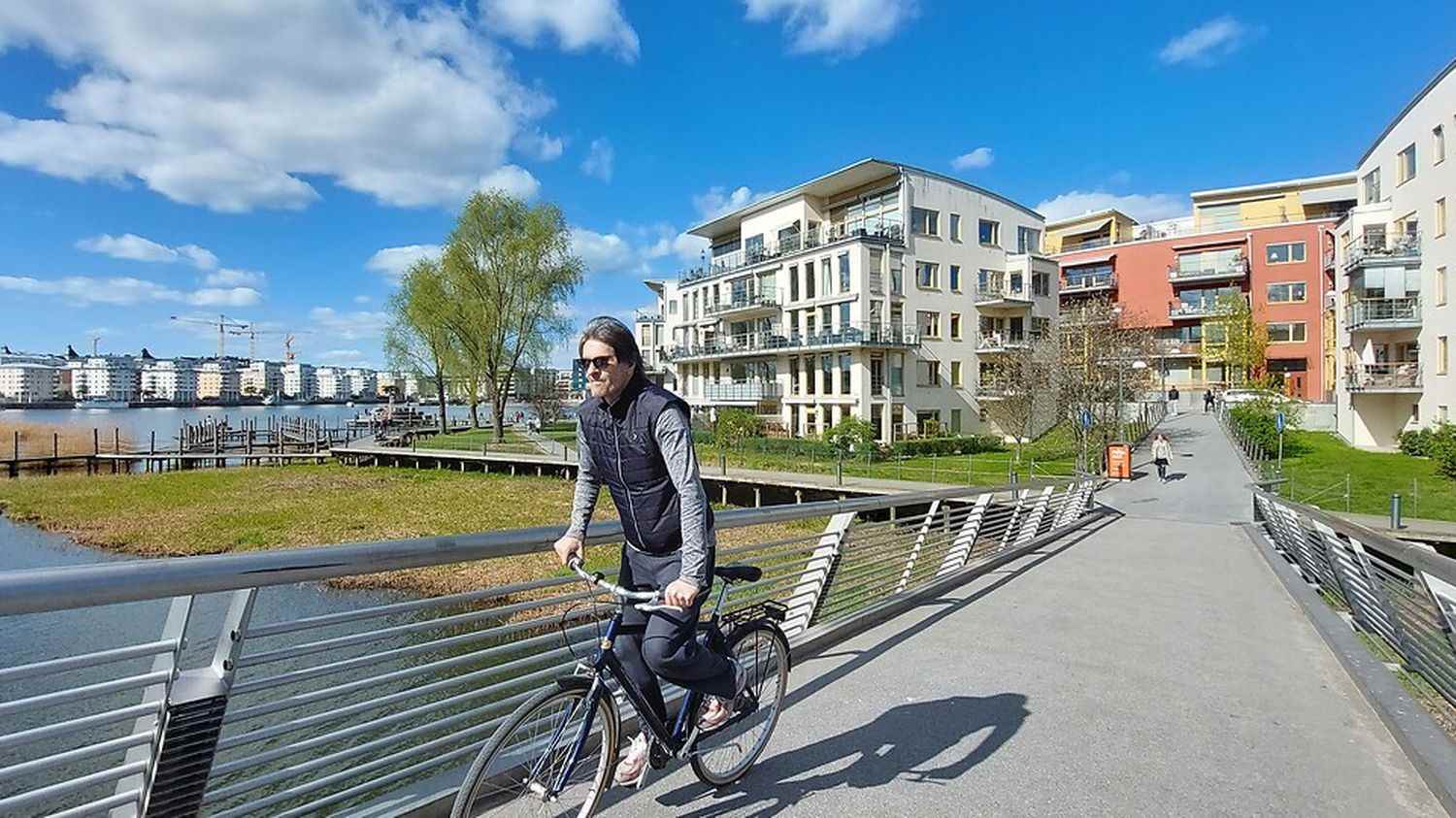This was one of the major axes of Emmanuel Macron’s re-election campaign: the promise of a future head of government directly responsible for “ecological planning”. The idea is to speed up the pace in terms of greenhouse gas reduction in France. But what is the method to follow? There is a country where ecological planning has been implemented for a long time: Sweden, whose objective is to achieve carbon neutrality by 2045.
>> What is ecological planning, which Emmanuel Macron wants to charge his future Prime Minister?
What is the method of this country of 10 million inhabitants? One thing is certain, there, ecological gestures have entered the daily life of the Swedes. And in particular to Harmmaby Sjöstad: this is a emblematic district of Stockholm: an “eco-district”, built from 1998, one of the first of its kind in Europe. With more than 10,000 apartments, bringing together some 25,000 inhabitants and lots of green spaces, ducks and birds, there is little space to park a car here. Better to have a bike…
These four to five storey buildings meet High Environmental Quality standards. And this is noticeable, in particular, in the garbage room. Marianne, 72, who has lived here for 16 years, makes the presentations sorting her waste, no, without a hint of irony: “There’s a bin for plastic, cardboard, colored glass, transparent glass… Here, the paper, and there the batteries. All that is supposed to be useful. We want to save the world! We are good people. We have Greta Thunberg! But we are still volunteering in Sweden…“, she smiles.
If Marianne plays the game willingly, she also thinks of her wallet: “I don’t have an electric car, I can’t afford it. But I have to pay crazy amounts for gasoline because of taxes.“

Among these taxes, there is the well-known “carbon tax”. If it has been applied in France since 2014 despite criticism, in Sweden it was implemented in 1991. Today, it reaches the sum of 120 euros per tonne of CO2, one of the highest amounts at the level global. T he Ministry of the Environment ensures that Sweden has reduced its greenhouse gas emissions by 35% between 1990 and 2020, in particular thanks to the massive use of renewable energies to supply district heating.
“There is a sensitivity to the environmental issue that is deep and old. Maybe a little more than in France“, assures his side Loic, 46, a Franco-Swedish civil servant in Sweden. He was an adviser on environmental issues for the government for twenty years. He recalls that ecological planning, seen from Sweden, is above all a promise.
Sweden and “ecological planning”: the report by Benjamin Illy
listen
“There is the generational objective, which is to leave to future generations a world where environmental problems are solved, not to take the natural resources of future generations hostage. This is the goal, far ahead, by 2050. Divided into sixteen environmental objectives, such as biodiversity, air quality, water quality, the ozone layer, which are themselves divided into milestone goals. This allows us to continuously monitor our progress or not. For example, on biodiversity, on water quality, particularly in the Baltic Sea, there, we may not be in the red, but we are in very, very pronounced orange.“
And there, too, to better understand this daily life under the sign of the environment, you have to get out of the trash cans. Outside, in front of a funny machine nicknamed “sopsug”, or literally, “bin vacuum cleaner”: the bag of household waste has therefore disappeared under the surface of the street. “It’s all recycled. Some will make compost and others will produce district heating and gas that we also use for transport. Biogas which will then be used to fill the tanks of buses circulating in the city“, assures Loïc.

Katarina Luhr, deputy mayor of Stockholm in charge of the environment and climate, learned that Emmanuel Macron wanted a Prime Minister in charge of “ecological planning”. According to her, the most important is the “collaboration“: “As deputy mayor, I think it is essential to collaborate. Local elected officials find solutions and this must be co-managed with the government. If we work together, we find the best way to use public money to make things go faster. The key is the collaboration between the national and the municipalities, but also the citizens“, she advises.
And if Sweden aims to achieve carbon neutrality by 2045, in Stockholm, the objective is even more ambitious: to free the city of all fossil fuels by 2040.
